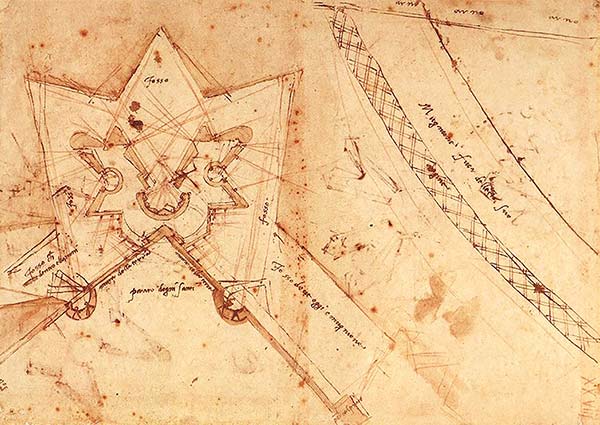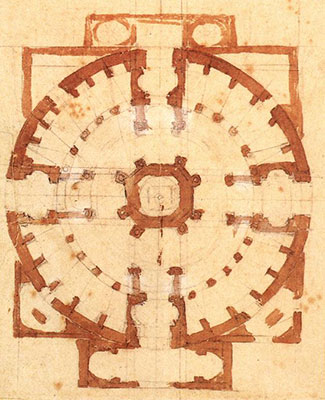Subtotal: $
Checkout-

Readers Respond: Issue 23
-

Family and Friends: Issue 23
-

One Inch off the Ground
-

Re-Mapping Belfast
-

Serving Kings
-

Up Hill
-

City of Bones, City of Graces
-

Small Acts of Grace
-

In the Valley of Lemons
-

City of Clubs
-

Save Your Sympathy
-

From “In the Holy Nativity of Our Lord”
-

Digging Deeper: Issue 23
-

Beneath the Tree of Life
-

Sidewalk Ballet
-

The Eternal People
-

Robert Hayden’s “Those Winter Sundays”
-

The Pilgrim City
-

Not Just Personal
-

Editors’ Picks Issue 23
-

Madeleine Delbrêl
-

Covering the Cover: In Search of a City
-

Urban Series (Neighborhood)

It might seem a bad move for a magazine named after a farm tool to bring out an issue on cities. Especially if that magazine is published by an Anabaptist community that originated in a back-to-the-land movement and still has the whiff of hayfield and woodlot to it. Why not stick to what you’re good at? Why jump lanes?
Because the future of humanity, pretty clearly, is urban. It’s a well-known tale, yet the numbers still astound: In 1800, just 7 percent of the world’s population lived in cities. By 1900, that figure was 16 percent, today it’s 55 percent, and by 2050 it’s projected to reach 68 percent, with one-third of the growth occurring in India, China, and Nigeria alone, according to a 2018 United Nations report. Each week, three million people move from the country to cities. Urbanization is arguably the biggest change of habitat that our species has ever undergone. It’s bound to change us.

Michelangelo Buonarroti, Study for Porto San Gallo, 1525
Images public domain
For anyone who cares about the common good of humanity, then, cities need to matter. This applies all the more to Christians, who are called not only to love their neighbors as themselves, but to “go into all the world” (Mark 16:15). Increasingly, that world is made up of cities.
An urban world calls for an urban Christianity. Pastors such as Tim Keller of New York City’s Redeemer Presbyterian Church or Les Isaac of London’s Street Pastors have found new ways of building church community in a city environment, combining an orthodox faith with open-minded outreach. The Bruderhof, too, despite its agrarian origins, has started around a dozen urban communities since 2003, with houses in Peckham, London; Harlem, New York; St. Petersburg, Florida; Asunción, Paraguay; and Brisbane, Australia. Other branches of the universal church can point to diverse examples of such urban community-building.
The city is preeminently the place where man fulfills God’s original mandate to create culture and community.
Enthusiasm for the city runs especially high among younger evangelical Christians, a group that still mostly hails from the heartland and the suburbs. An earlier generation of evangelicals thrilled to the challenge of mission in Asia or Africa; today, the adventure is in urban church planting. Books on the theology of the city abound, bearing titles like The Urban Christian and replete with scriptural arguments supporting a preferential option for the city. They’ve popularized a new set of terms such as “incarnational mission” – the idea that simply being present as Christians in an urban neighborhood, “without an agenda,” can serve as a witness to the love of Christ.
Unsurprisingly, such attempts don’t always hit the mark, any more than last century’s missions did. Earnest church planters can allow their good intentions to outstrip their self-awareness. A long-term resident of a minority neighborhood told me of a group of middle-class white twenty-somethings who discerned a calling to move in to practice a “ministry of presence.” “Actually,” he commented, “Jesus has been present here all along, way before they arrived.” He appreciated the newcomers’ desire for radical discipleship, but reckoned they’d eventually see that they were less likely to catalyze mission than to receive it.
The modern city is an electrifying concentration of creativity, energy, and cultural dynamism. And it’s also still the “cauldron of unholy loves” that Saint Augustine discovered in Carthage one and a half millennia ago. It’s the place where the cruelties of mammon, the hubris of power, and the perversions of lust manifest themselves most crassly. That’s why even Keller warns Christians of the dangers of “loving the city”: be careful what it is that you love. As the poet William Blake, walking through London in 1794, put it:
I wander thro’ each charter’d street,
Near where the charter’d Thames does flow.
And mark in every face I meet
Marks of weakness, marks of woe. …
How the Chimney-sweepers cry
Every blackning Church appalls,
And the hapless Soldiers sigh
Runs in blood down Palace walls
But most thro’ midnight streets I hear
How the youthful Harlots curse
Blasts the new-born Infants tear
And blights with plagues
the Marriage hearse
Sexual exploitation, callous militarism, false religion, legalized greed: in the city, Blake diagnoses the symptoms of the demonic.
Yet ugliness is not the city’s only face. The city, not the country, is where Plato wrote his dialogues, Dante the Divine Comedy, and Shakespeare his Lear. In the city Bach composed the Saint Matthew Passion, Handel the Messiah, and Coltrane A Love Supreme. The city is the place of Chartres Cathedral and the Hagia Sophia, of the Medina of Marrakesh and Central Park. It’s preeminently the place where man fulfills God’s original mandate to create culture and community (Gen. 1:28).

Michelangelo Buonarroti, Plan for a Church, ca. 1560
To the Christian church especially, the city has given birth to remarkable movements of revival and renewal. In the United States, these include the Christian Community Development movement started by civil rights pioneers John and Vera Mae Perkins, based on the “three Rs”: relocation, reconciliation, and redistribution. The generation before saw the founding of the Catholic Worker movement by Dorothy Day and Peter Maurin. Before them came the settlement houses such as Hull House in Chicago and Kingsley Hall in London, as well as Toyohiko Kagawa’s cooperatives in the slums of Tokyo and William and Catherine Booth’s Salvation Army. The history extends still earlier to the thirteenth century, to the houses for the poor established by the Beguines and Beghards in the Low Countries and by Saint Elizabeth of Hungary in central Europe. It goes back to the birth of the church itself: as scholars such as Wayne Meeks and Alan Kreider have shown, early Christianity was largely an urban movement.
It’s in that spirit that we’ve assembled this issue of Plough. A few highlights: James Macklin tells about one of Manhattan’s oldest faith institutions serving the homeless, The Bowery Mission, which this year celebrates its 140th anniversary. Brandon McGinley describes how a few families have become more intentional about community in a Pittsburgh neighborhood. Jenny McCartney writes of the hard work for reconciliation in her native Belfast, while Jose Corpas recounts one woman’s fight to establish schools in a Guatemala barrio.
Finally, as N. T. Wright reminds us, the story of Scripture culminates not in a return to the green paradise of Eden, but in a city: the New Jerusalem. It’s a city that will be both a temple and a garden, over which will tower the Tree of Life (Rev. 22). It’s a city where – since swords are to be beaten into plowshares – farm tools will not be out of place.

Sign up for the Plough Weekly email
Already a subscriber? Sign in
Try 3 months of unlimited access. Start your FREE TRIAL today. Cancel anytime.


































Lawrence
Peter's sentiments may be sincere, but no, no, no! I believe that people need space. During the horrors of city bombing in war it is only the country folk who survive, and the city folk flock to the country to find food. Dresden, Coventry, Hiroshima. Consider Mumbai, Delhi, Calcutta. Financial disaster in Athens is far less evident in the islands. People flock to the cities and wind up in ghettos. The jobs they do are often in service industries, which often means commerce of the most ephemeral sort. In the final analysis cities prove to be inhuman. The material force currently raging around our planet finds its inception in cities. Without country folk, city folk starve. Sorry to sound so negative, but the facts remain. There is a marked need for ministry in urban areas. But please consider how need arises.